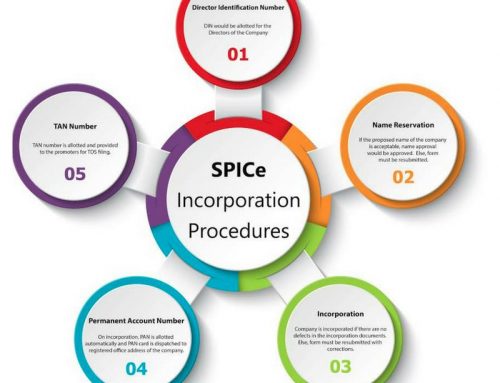Introduction
An Entrepreneur always wants to incorporate his own company. Even after coming up with his own idea, selecting the type of business he wants to form (Sole Proprietorship or LLP or Private Limited Company, etc.) and organizing the whole team including the drafting of business plan and raising funds for the company, his company is still not recognized as a company under the law. According to Companies Act 2013, a company is one which is incorporated according to the rules and procedure mentioned in the act itself. Therefore, any company who wish to be identified as a company legally has to register itself and according to the procedure already laid out by MCA or Ministry of Corporate Affairs. Therefore, described below is how can you go legal or better what is the exact procedure of Company Registration in India.
Typically, the company registration in India can be done under 14 days. Any delay generally arises due to any discrepancy while verification or just heavy workload of The Registrar of Companies.
Before going ahead with the company’s registration, you should be well aware of all the technical terms as mentioned in the Companies Act. This will also help you to select the best form of business/company you want to set up. A company can be formed under the law only when seven or more people are there in the case of a public company; two or more people in case of a private company; one person in case of an OPC (somewhat is considered to be private with few exemptions).
Then, a memorandum has to be drafted which shall state the name of your company. Now there are certain rules regarding the selection of a name for your company also. It should also mention the location of registered office, objectives, and vision of the company, a concise description of whatever services or goods the company is providing, the liability of the members of the company, the amount of share capital (with which company is being registered). This memorandum which is drafted in a particular manner containing sections and appendix is to be submitted along with Article of Association (mentioning legal policies and operations). These two documents are generally drafted by CS/Lawyers appointed by the company itself. Company registration in India is a tedious task.
Both of the documents are submitted along with identity proof, particulars of all the members, describing their positions giving their residential address and declaring their duties. Also an affidavit from all the members and DSC (Digital Signature Certificate) for all of the directors and DIN (Director Identification Number) for which DIR-3 and DIR-12 should be filed. Form INC-1 is filed for name approval of the company. As stated before there are certain rules regarding the naming of a company. The name approval is the hardest to get since name selected should not be similar to any other already registered company, therefore a company’s name should be selected very carefully. INC-7 (INC-2 in the case of an OPC) is filed to request incorporation of the company along with INC 22.
However, to lessen all this tedious work and filing of so many forms, MCA decided to introduce Form INC-29. This form is enough to be filed along with a DSC, Memorandum, and Article of Association with few more identity proof and address proof, as mentioned in the form itself. Upon which a verification takes place, if no objections are found or filed, a license is issued by the Registrar of the Companies. However, one should note that The Central Government has the power to cancel this license if the company does not comply with any rules or regulations or any wrong usage of the benefits provided to the company is found.
Incorporation of a Company involves
Step 1
Obtaining a DSC (Digital Signature Certificate) for at least one director.
Step 2
The filing of INC-29. It includes an application for DIN (Director Identification Number) for three directors, application for the name (only one name allowed to be suggested), application for registration of the company, application for TAN and PAN and finally details of directors and registered office.
Step 3
Third being, attaching other documents which include Memorandum, Articles of Association, Affidavits by the directors, Address proof (of the office), identity proof and address proof of the applicant.
Step 4
Finally, all these documents are digitally signed by one of the directors and submitted to the Registrar of Companies online or offline depending on you with the prescribed fees. Verification takes place and a license is issued. After which tax registration filings are done.
After following all these steps, company registration in India is done.
It can be, therefore, seen clearly that company registration can be done in a short span of time if all the filings are done clearly. However, the filing of all the forms and documents may seem a hard job. We, at LegalRaasta, can help you to incorporate your company easily.






